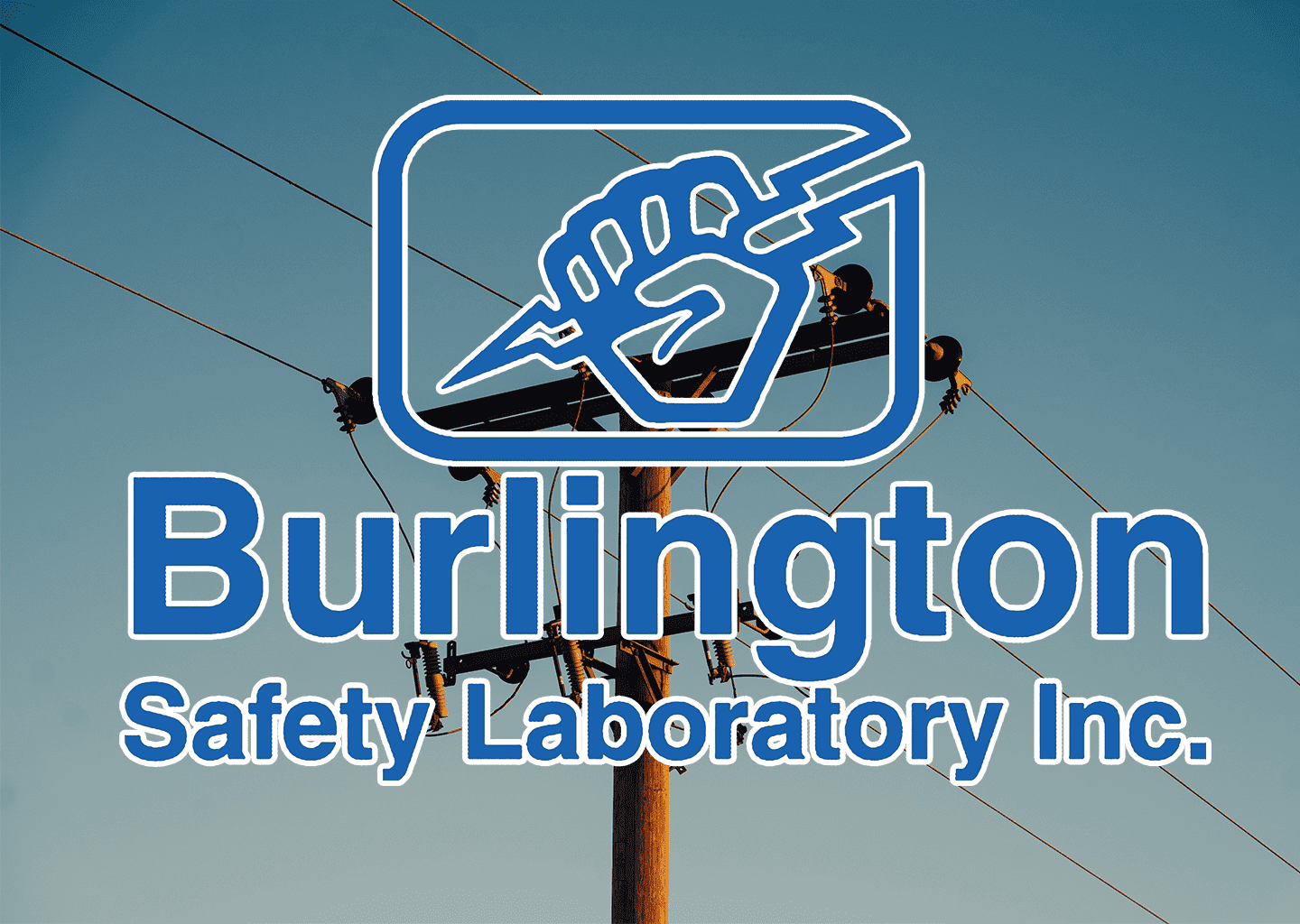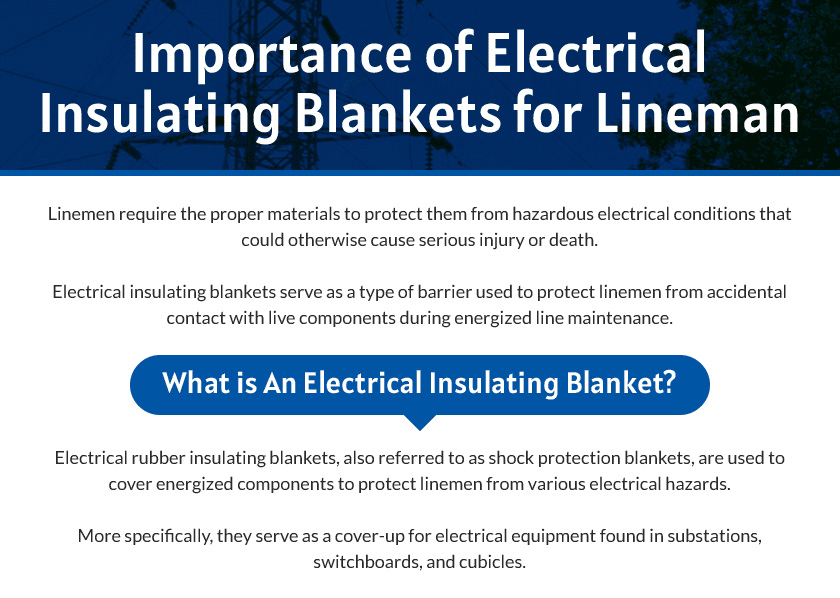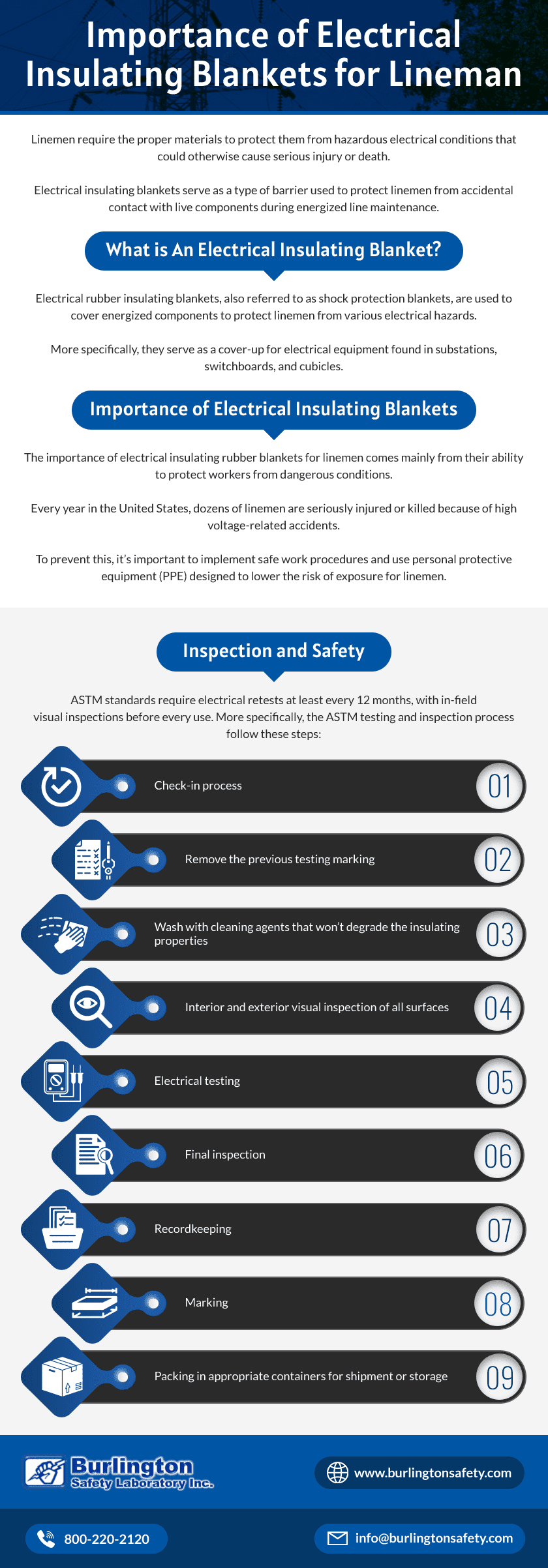Dielectric Testing Process
Here are the basic steps involved in the dielectric testing process:
- Check-in
- Removing previous testing marking
- Washing using cleaning agents that will not degrade the insulating properties
- Visual inspection of all surfaces (inside and out)
- Electrical testing
- Final inspection
- Recordkeeping
- Marking
- Packing in appropriate containers (“appropriate containers” means boxes, or similar sturdy packaging materials to prevent folding, creasing or similar loose storage that can cause stress on the rubber) for storage or shipment
What Is The Purpose Of Dielectric Testing?
The purpose of personal protective equipment dielectric testing is to ensure the safety and effectiveness of electrical protective gear by testing its ability to withstand electrical current. This type of testing is done to identify any defects or weaknesses in the equipment’s insulation and to verify that it meets the necessary safety standards. By evaluating the dielectric strength of the PPE, potential electrical hazards can be minimized, and workers can be provided with reliable protection against electrical shocks and other electrical risks.
Benefits of Dielectric Testing
Dielectric testing for personal protective equipment (PPE) refers to the testing of the electrical insulation properties of the equipment to ensure its safety and effectiveness in protecting against electrical hazards. The benefits of dielectric testing for PPE are as follows:
- Ensures safety: Dielectric testing helps ensure that the electrical insulation properties of PPE are functioning effectively. This is crucial in protecting workers from electrical shocks, burns, and other injuries that can occur in electrical work environments.
- Compliance with regulations: Many regulatory bodies, such as the Occupational Safety and Health Administration (OSHA), require regular dielectric testing of PPE, particularly for electrical gloves and other equipment. Compliance with these regulations is necessary to avoid penalties and legal liabilities.
- Identification of defects: Dielectric testing can detect defects or damages in electrical insulation materials that may not be visible to the naked eye. Identifying these defects can prevent the use of faulty or compromised PPE, thereby enhancing workplace safety.
- Prevents equipment failure: By testing PPE for its dielectric properties, potential electrical breakdowns or failures can be identified before they occur. This helps prevent accidents and unplanned downtime caused by equipment failures






